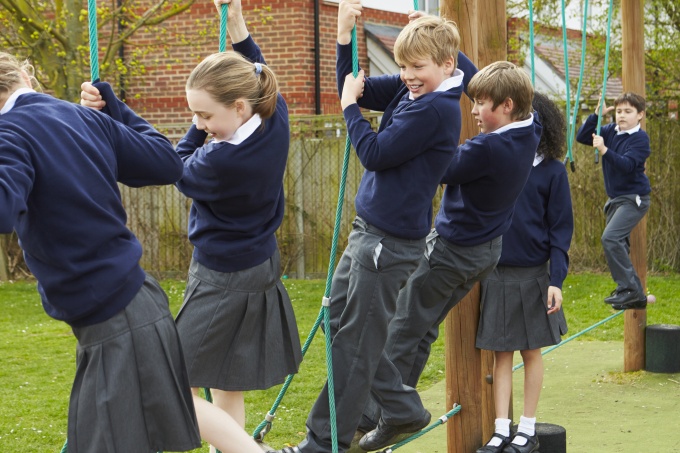By Fran Martin, Headteacher of St Andrew’s Primary School, in Congresbury, North Somerset
I started my journey at St Andrew’s in September 2017. St Andrew’s is a church school with a diverse community intake, which we embrace. At this time, the school ethos was very much child-centred, with positive relationships, but we needed a new approach to responding more effectively and supportively to some dysregulated behaviour. There were significant numbers of fixed-term exclusions (221 the academic year before) and the atmosphere of the school had a tension of waiting for the next child to dysregulate. Staff morale was at an all-time low and there wasn’t a consistent approach to managing behaviour despite significant staff expertise and experience.
"I’d had a small introduction to Thrive® at my previous setting and had found it really interesting so immediately wondered about how I could embrace Thrive at St Andrew’s to create a culture and school environment which was resilient, connected and able to support pupils’ social and emotional development. The pedagogy made sense. It has brought together many theories that we, as a staff, were already aware of but the structured approach and framework of Thrive was the missing piece of the jigsaw."
I enrolled our learning mentor onto the Licensed Practitioner course in October and I attended the SLT training. We both returned to school full of enthusiasm and hopeful of at last being able to make a difference. Together we visited local Thrive schools to watch how it was implemented in a range of settings. This was a hugely supportive strategy to enable us to begin our plans and Thrive journey.
Thrive has been part of our School Development Plan each year. All staff have had in house training and we now have two Licensed Practitioners who have delivered whole school assemblies explaining the triune brain model and teaching children about brain development, stress regulation system and ‘flipping their lids’. How wonderful it is for me as headteacher to now hear children in school using the vocabulary and teaching their peers about their amygdala!
Commitment to the Approach and positive staff buy-in has led to significant positive changes throughout school - an incredible reduction in fixed term exclusions, a calmer atmosphere and a dramatic decrease in high-level crisis situations. We are incredibly fortunate that we have such an enthusiastic Thrive team who champion this approach on a daily basis and are fantastic role models. All our staff confidently use their VRFs (Vital Relational Functions) and see the benefits of shining a light on behaviours. With the use of VRFs and the PACE (Playfulness, Acceptance, Curiosity and Empathy) models, using a shared language across school enables children to express their feelings and begin to manage them independently. Making sense of the messages communicated through the behaviours also helps to support children develop their positive mental health. There has been a cultural shift in how behaviour is viewed. Thrive information has been cascaded to stakeholders through newsletter items, Facebook and Twitter.
I have noticed such a positive effect since investing in our safe area which we have named The Nest. With all of our class crews named after birds, we felt it was the most apt description of a place where all children are welcomed to use as their safe base and where there is permission to play. Just outside The Nest is an outside gym area where accessible physical equipment is available to aid regulation and improve mental health through movement and exercise.
I strongly believe that making connections and embedding relationships is key. I believe in a reflective school with adults and children alike continually considering how to do things differently and how it may result in an alternative positive outcome. Everyone knows the power of positive relationships and compassion and these are at the heart of our school: meet and greets at the classroom door, metaphor check ins, adults sharing ‘keeping in mind’ objects, reparative conversations and a ‘gate crew’ who meet our pupils and their parents with a welcoming greeting, every morning on their entrance to school.
Over to you
Reduced anxiety and behavioural incidents. Calmer classrooms filled with engaged leaners. Improved relationships with parents and carers. These are just some of the outcomes reported by settings embedding Thrive’s whole-school approach to mental health and wellbeing. Are you ready to join them? Click here to get started.
Pass it on
Small actions can lead to a big ripple effect. If you enjoyed this post or found it helpful, please consider supporting us in our mission to help every child and young person feel safe, supported and ready to learn by sharing it using the social media buttons below.
Want to join a like-minded community of senior leaders and classroom staff benefitting from insights and strategies to improve attendance, behaviour and attainment? Add your email address below. (It’s easy to unsubscribe).

_680.jpg)

(7)_680.jpg)

_680.jpg)